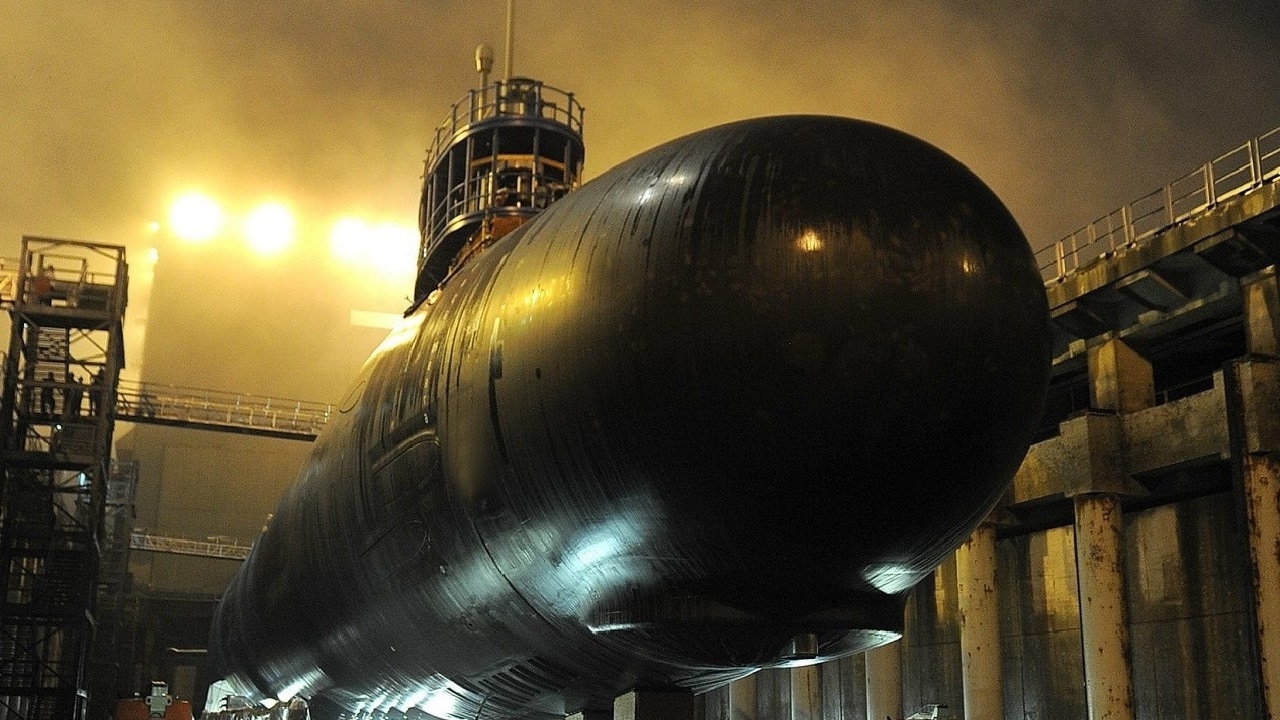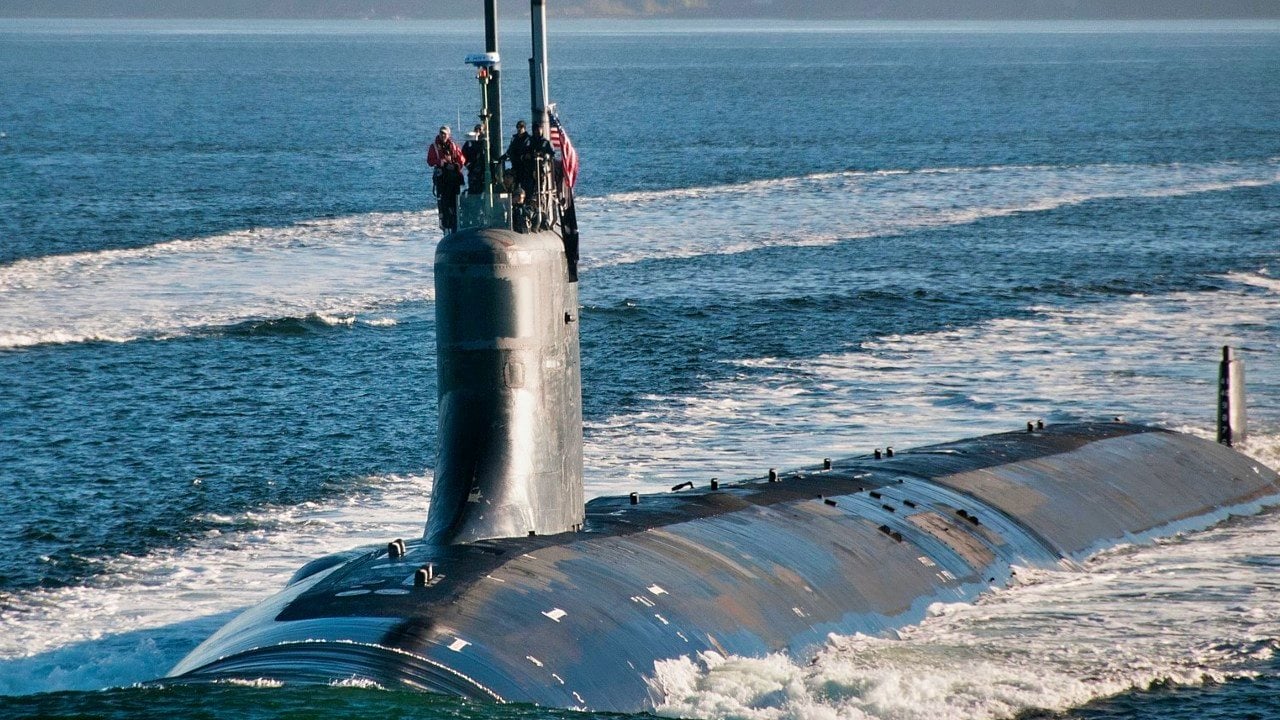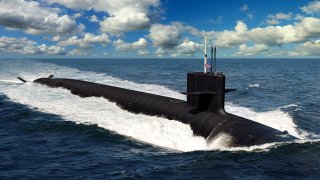Are the U.S. Navy's Submarines Getting Too Expensive?
The United States lacks the industrial base to build the U.S. Navy's future fleet of submarines as fast as the service may require them – but compounding the problem is that even if the boats could be built faster, it would result in a considerable squeeze on these service's budget.
The United States lacks the industrial base to build the U.S. Navy's future fleet of submarines as fast as the service may require them – but compounding the problem is that even if the boats could be built faster, it would result in a considerable squeeze on these service's budget.
This is hardly a new problem.
David Axe, writing for Forbes.com reported in December 2020 that over the next 30 years, the U.S. Navy projects that it could spend between $12 billion and $15 billion annually buying between three and four new subs a year.
"That's out of an overall shipbuilding budget that could range between $22 billion and $33 billion annually," Axe wrote, noting that the service will spend more than half of its shipbuilding budget on the submarines – even though the boats account for just a quarter of the hulls the fleet plans to acquire.
The U.S. Navy currently has 68 submarines in service – and its plans call for it to build as many as three Virginia-class attack subs per year, as well as roughly one Columbia-class submarine per year until around 2035. According to a report from the Congressional Budget Office, a lack of shipyard infrastructure could delay those plans.
Yet, to maintain a force of around 70 submarines, the U.S. Navy needs to build two per year. At issue is that during the 1990s and early 2000s, the service only built a handful of new subs. Now it is faced with modernizing the fleet and that will cut into its budget, while in the meantime, the submarine fleet could fall to as low as just 50 vessels.
U.S. Navy Submarine Woes
Then there is the issue of what precisely the U.S. Navy's submarine fleet serves.
While the ballistic missile submarines (SSBNs) are seen as a vital component of the nation's nuclear triad, just 14 of the Ohio -class SSBNs are now in service. Those boats together carry about half of the U.S. active strategic thermonuclear warheads. In addition, four of the Ohio-class subs are converted to cruise missile submarines (SSGNs).

According to the U.S. Navy, each SSBN has two crews, Blue and Gold, which alternate manning the submarines and taking them on patrol. This is meant to maximize the SSBN's strategic availability, reduce the number of submarines required to meet strategic requirements and allow for proper crew training, readiness, and morale.
The future Block V Virginia-class submarines are slated to supplement and eventually replace the Ohio SSGNs when they are retired.
However, the question is what role the rest of the U.S. Navy's subs actually serve.
As Newsweek reported last April, the U.S. Navy seeks to expand the submarine fleet at a cost of $200 billion – which is equivalent to the GDP of Ukraine. As the magazine of record noted, "The U.S. Navy can deploy barely a quarter of its attack submarine force at any one time, and last year, despite a war raging in Ukraine and China's rise as a global superpower, only 10 percent of its submarines operated stealthily by spending more than 30 days fully submerged."

Cause for Concern… Except
The surge in China's navy has been seen as a major concern – and the People's Liberation Army Navy (PLAN) is now the largest naval force in the world in terms of sheer tonnage. But this also needs to be put in context. The U.S. Navy still exceeds the PLAN in terms of tonnage, notably in aircraft carriers, as well as in the number of amphibious assault ships, which are essentially aircraft carriers in everything but name.
Beijing is spending wildly on its navy, and it will eventually face the same problem that plagues Washington now – namely that it will suddenly have an antiquated fleet that needs to be upgraded – while it will continue to spend money on vessels that it can ill afford to lose in a war.
That is just part of the overall equation.
"China has the world's largest navy, and its submarine force is commonly described as catching up to the United States in quantity and quality. But as sluggish as the U.S. submarine performance is, Russia and China are even worse off. That raises further questions as to why the Navy is spending so much money in upgrading the attack submarine fleet, and in the ultimate value of such gold-plated machines," Newsweek further added.

China and the United States may not be destined for a major conflict as there is little to gain for either side. Moreover, instead of the mutually assured destruction (MAD) that kept the Cold War from turning hot, this arms race is such that both sides face mutually assured financial destruction or as this reporter has suggested mutually assured bankruptcy (MAB).
Beijing and Washington are buying expensive toys for their respective navies that neither side ever wants to use – while the costs just continue to go up. But perhaps that is what will keep the peace.
Author Experience and Expertise: Peter Suciu
Peter Suciu is a Michigan-based writer. He has contributed to more than four dozen magazines, newspapers, and websites with over 3,200 published pieces over a twenty-year career in journalism. He regularly writes about military hardware, firearms history, cybersecurity, politics, and international affairs. Peter is also a Contributing Writer for Forbes and Clearance Jobs. You can follow him on Twitter: @PeterSuciu. You can email the author: [email protected].
All images are Creative Commons.


